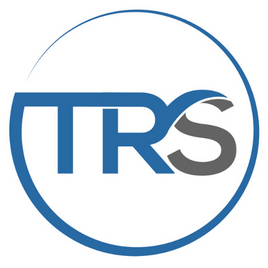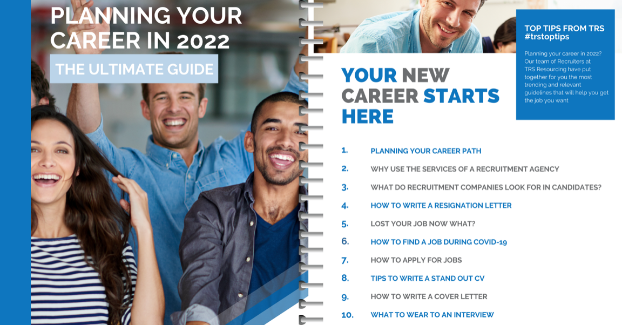How to write a cover letter
How to write a cover letter You’re looking for a new job. Your resume is up-to-date and ready to send to potential employers. You find a job description that sounds like a perfect fit for you. You’re ready to apply when you realise you have to include a cover letter. For some, writing a cover…

How to write a cover letter
You’re looking for a new job. Your resume is up-to-date and ready to send to potential employers. You find a job description that sounds like a perfect fit for you. You’re ready to apply when you realise you have to include a cover letter.
For some, writing a cover letter is a dreaded part of every job application. It can be a time consuming, frustrating experience trying to find the right words to express why you are an excellent candidate for the role.
How professional does it need to look? Who do I address it to? How long should it be? This blog will answer all your questions and provide resources to help you write a winning cover letter.
Why do I need a cover letter?

When applying for a particular position, most job seekers are required to submit a cover letter at the same time as their resume. A good cover letter is used to highlight specific qualifications that make an applicant stand out among other applicants. It is the perfect place to specifically address the skills and experience you have that suit the position’s job requirements.
If you are in doubt as to whether a cover letter is required, read the job ad. This will generally state whether a one is needed as part of the application. If your cover letter is well written and engaging, hiring managers will be less inclined to throw it away without giving you a chance. They will also be more likely to go on and read your resume, bringing you one step closer to securing an interview.
We asked our Recruitment Team what they look for in a cover letter:
“You can tell if they use the same one for every job application, but it stands out when they tailor it to the company’s values and responsibilities”
“My best recommendation would be to tailor your cover letter to the job and company you’re applying for. Look for keywords used in the ad, and put them in your CV”
And what to avoid:
“Overcomplicated, lengthy cover letters”
“Just making a list of your qualities. It is nice to know how you can apply
your qualities at work!”
Five tips to writing a great cover letter
1. Address your letter to the right person

The first step is to find out who will be reading your cover letter and ensure that you are addressing it properly. If your cover letter is directed to a specific person, address it directly and in an appropriate manner (i.e., if you know the environment is casual, you can use Dear (Firstname), otherwise using Mr./Ms. (Surname) is appropriate). If you are unsure of the title a person uses, do not include one.
If your cover letter will potentially be read by multiple people (such as the Human Resources department), or you cannot find the hiring manager’s name. In that case, you can simply address it to “Dear Hiring Manager” instead. Avoid the generic “To Whom It May Concern” and “Dear Sir or Madam”.
2. Start with a strong Opening Statement
The opening statement of a cover letter needs to grab the reader’s attention and provide them with an idea of how you can benefit their organisation. If possible, try to include how you came across the open position and how your skills and values would align with that of the company.
Be clear about what role you are applying for and what relevant experience you possess. This is your introduction to the hiring manager, and will ideally keep them reading until the end of your letter.
A great way to capture the reader’s attention is by telling a story. A brief example of how you gained results/increased sales/handled a project by applying relevant skills will show them how you can add value to their company.
3. Be specific
It’s immediately evident to a hiring manager when they’ve been sent a generic cover letter. You might save time by sending the same cover letter to several companies, but it will leave a bad first impression. Using a cover letter builder or template is fine, but make sure you address the specific role, company and job requirements. Prospective employers may have read dozens of resumes and cover letters, so it is important that yours stands out and presents you favourably.
Tailor the letter to the company’s values and the skills listed in the job advertisement. Show how your qualifications and work experience align with the job’s requirements. Hiring managers are looking to see if you fulfil their criteria for the role and can provide specific examples. If you only list the bare minimum requirements, your reader will likely assume that you are not very strong in those areas.
For each requirement listed in the job description (i.e., education, technical skills), include how you meet or exceed them while mentioning how it can be beneficial to the company. If you don’t have experience in certain areas, avoid drawing attention to it and instead focus on your strengths. Even if you lack the exact experience requested, you can always highlight transferable skills you possess that would translate well into the role.
4. Keep it short

A cover letter should generally be under one page in length (or about five paragraphs). This isn’t the place to list your education and employment history – that’s all contained in your resume. The cover letter should mention keywords from the job description and a brief explanation of how you can meet these requirements. Don’t write about what this job could do for your career – write about what you can bring to their company. Avoid flowery, overly complicated language and sentences that are very long. A direct, well-written letter is all you need to showcase your experience.
5. Finish with a call to action
The conclusion should summarise how your skills and qualifications align with the position’s requirements and how you would like to proceed with the hiring process (i.e., by scheduling an interview, speaking over the phone with HR, etc.). Include a call to action by expressing your willingness to discuss the role further and how the reader can contact you.
Depending on how well your opening statement went, the hiring manager may already be considering bringing you in for an interview at this point. For an unadvertised position, having a follow-up plan in place will give you an advantage over other applicants.
Final Steps
Once you have written your cover letter, proofread it to ensure there are no grammatical or spelling errors. Consider asking someone to review your cover letter as well for an additional pair of eyes. They may pick up small mistakes that you have missed. The last thing you want is for an employer to second guess how well you would work with their organisation because of how unprofessional your cover letter appears.
There are many online cover letter samples available. Check out the WA government’s Jobs and Skills page to see professional cover letter examples.
Need some help?
TRS Resourcing is a leading labour hire company in Melbourne and Perth Use our free cover letter template or CV generator to get you started. You’ll also find a wide range of services and benefits we offer job seekers.
Contact Us
Find a job today by viewing our Jobs page or signing up for Job Alerts with TRS Resourcing’s recruitment agency online!
To speak with TRS Labour Hire Recruitment Consultants, please contact the following offices:
Labour Hire Melbourne 03 9917 3545
Labour Hire Perth 08 6205 3570
Follow TRS on social media here
THE 2022 JOB SEEKERS ULTIMATE GUIDE
Are you looking for a job in Australia? Check out our guide on how to find and secure your dream position! We’ll teach all about the process, what not-to do when interviewing, as well as provide useful insights into Australian companies’ hiring practices.
Read the complete guide “The Ultimate Career Guide for Job Seekers in 2022” here
You can also DOWNLOAD our Job Searching Guide for FREE


